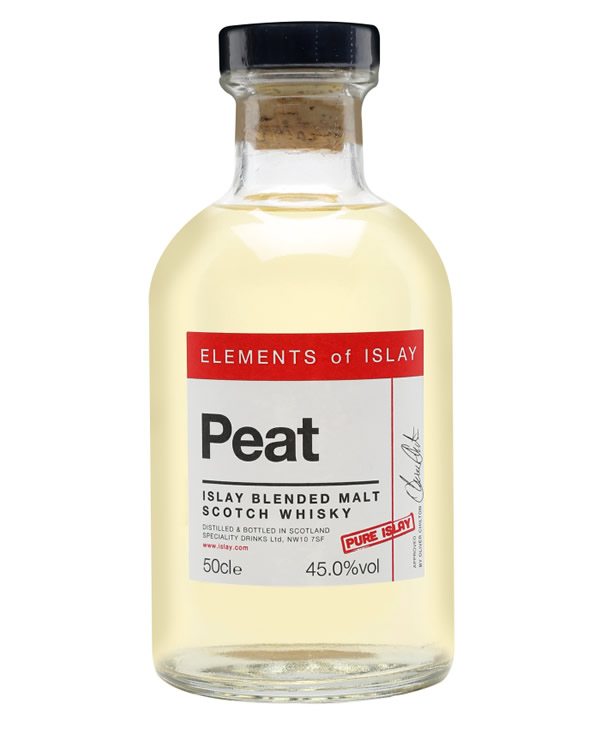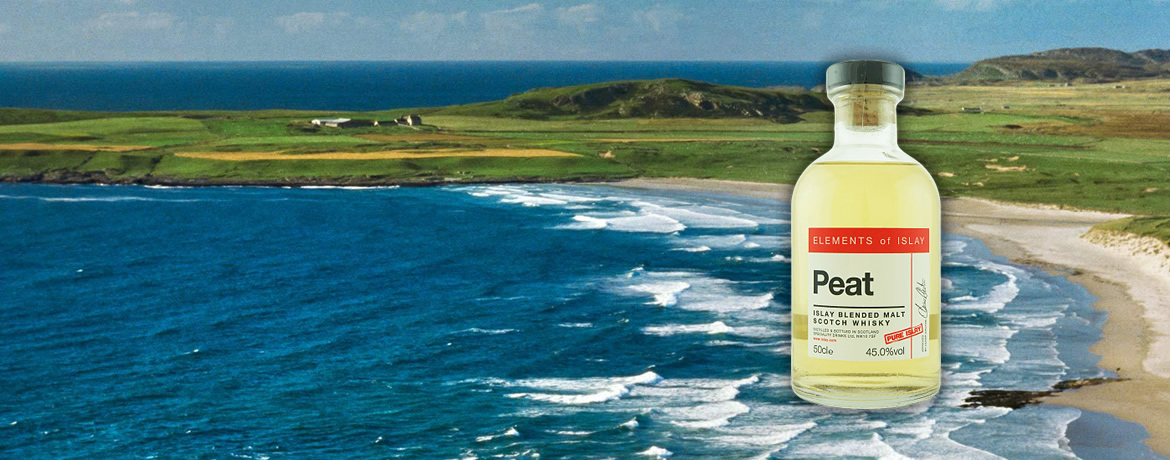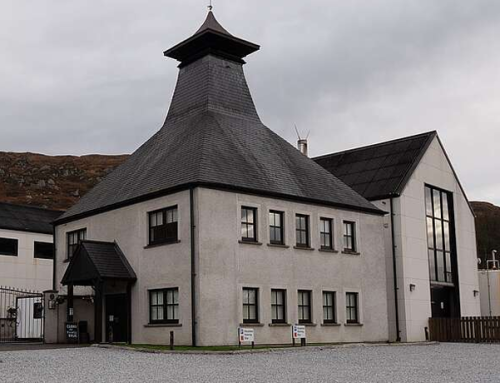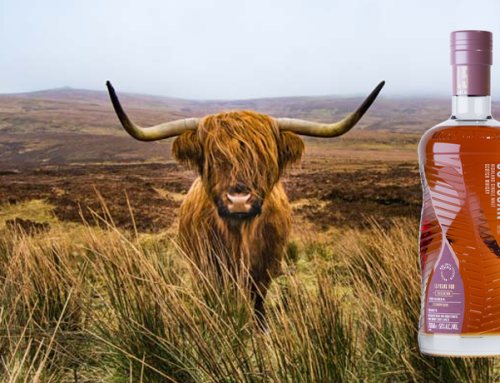This month we are going to explore and learn about Peat. What is peat? What does peat taste like? How is it different to smoke? All questions we will look at this month. To really explore Peat we needed a whisky that sets out to isolate and highlight the peat characteristic. In order to do so, we decided to try something a little different. A ‘Vatted Malt’. We are happy to be the first (and only at this time) in Australia to be able to offer this whisky- the Elements of Islay Peat 45.
The Elements of Islay Peat 45, is a vatted malt that is designed to highlight the flavour of peat. Yes – it’s a vatted malt. As you know, we normally only offer single malts – this is only the second vatted malt we’ve featured. A vatted malt is a blend of single malt whiskies, but has no added [harsh] grain alcohol blended with it (as does a ‘blended whisky’). The Elements of Islay range consists mostly of Islay single malts. In the case of the ‘Peat 45’ expression – they have vatted a number of Islay single malts to make a malt whisky that highlights the peat flavour typical of the ‘Islay style’. For their ‘Peat’ expressions (they also offer a cask strength), they age their new make spirit in second refill barrels which impart very little oak flavour to the whisky that might interfere with the pure flavour of the peat.
Mouthwatering young fruity barley sugar and bananas underlie the rich smokiness on the initial aroma and distinct peat reek.
The immediate flavour on tasting is from the mid palate; almonds and cashews and roasted chestnuts. Then the smoky flavour, reminiscent of bacon, wood fired bbq or the smell of a glazed ham roasting in the oven prior to Christmas dinner. The palate is then dried with rich tannins, followed by more richer creosol peat earthiness, which evolves into a primary sweetness on the tip of the tongue likely to be from Xylenol.
DISTILLERS NOTES
Bottle Size : 700ml
ABV : 48% abv
Region : Scotland – Islay
Peated : Yes
Nose: Soft smoke and rich citrus lead the nose, with orange zest and peel joined by thick-cut smoked bacon. Maritime character rolls in, with damp sea shells and rock pools accompanied by glowing coals and beach bonfires.
Palate: Smoke dominates to start – smouldering hickory and complex Lapsang Souchong tea notes are backed up by coal smoke and cast iron stoves. Sweeter notes of salted caramel and bittersweet darker chocolate slowly build.
Finish: Medium length, with sea spray and baked apples fading to heavy smoke and spice.

ABOUT THE DISTILLERY
Traditionally, peat is burned to dry out barley which has been wetted to make it start germinating. When barley germinates, it changes the complex sugars into simple sugars that can be used by the plant to grow. The germination process needs to stop, otherwise the barley grains will end up as barley plants. Peat is burned to heat up and dry out the barley grains, which retains the simple sugars,and halts the growth of the barley. These simple sugars are called malts, and the process is called malting and from fermenting these sugars and distilling them, whisky is made.
The flavours imparted into the whisky in this process are left over from the smoke that permeates the barley grains. The flavours maybe from peat or from the burning of the peat which is referred to as smoke. These flavours are distinctly different, but often occur together. The smoke flavour is like the smoke you will smell on a cold winters night, when people have their fire places lit, or a good old camp fire, wood fired bbq, or pizza oven. It can also be thought of in terms of smoked meats, so you will often hear of smokey whiskies having bacon type flavours.
Peat can be found independently of smoke when the water used for the whisky comes from a spring that has come through peat. It is most usually found alongside smoke flavours rather than in isolation (as very few – if any – distilleries still use natural spring water). Peat smells like fresh compost, or rotten vegetables, but more pleasant. Often described as an ‘earthy’ flavour – it can be an acquired taste and like many acquired taste it is loved by it fans, and often misunderstood by it’s detractors.


Both these flavours of peat and smoke are derived from chemicals called Phenols. They range from 5 to 50 ppm in peated whiskies and vary in composition depending on the type of peat. Peats from Islay are mainly from sphagnum, which tend to impart lighter simpler phenols, creosols and guaiacols (bacon), furans and pyrans, where as peat from woody heather more commonly found on the mainland and orkney have more Syringols which impart smokiness on the nose, but not the pallet.





